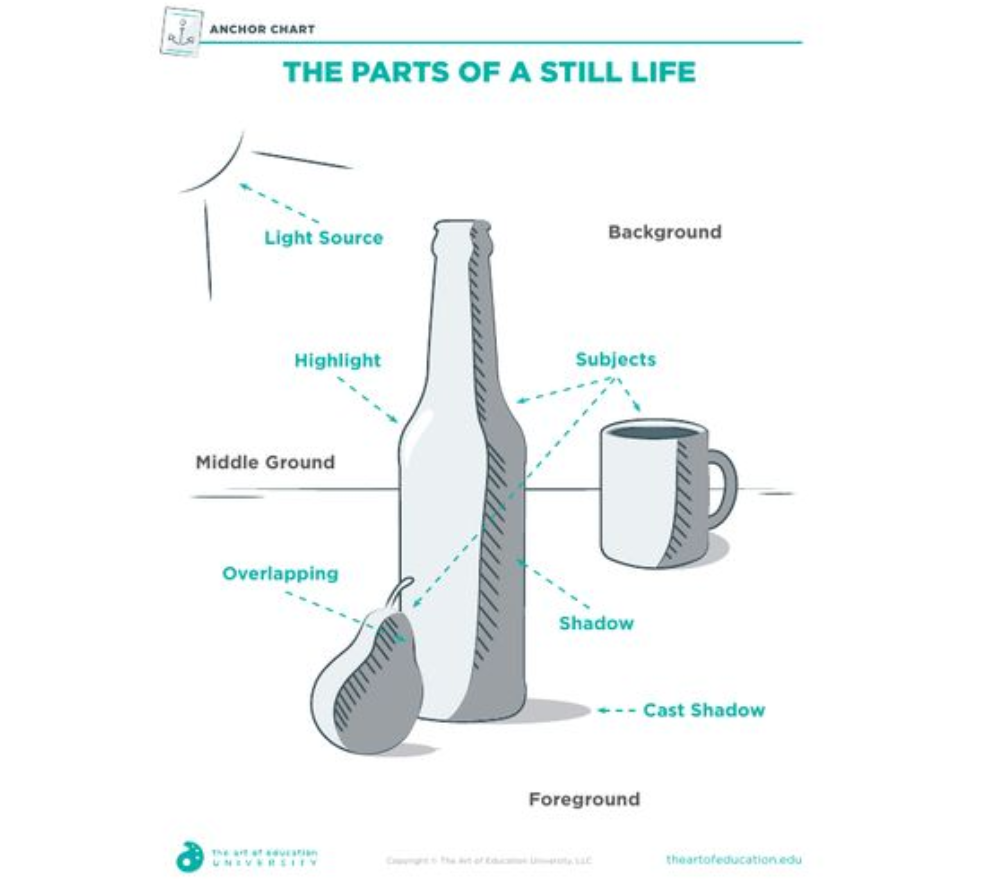Essential Components of a Still Life

1. Light Source
-
Direction: Determines shadow placement (45° angle is ideal)
-
Type: Hard (spotlight) vs. Soft (window light)
-
Pro Tip: Use a single light source for cohesive shadows
2. Background & Foreground
| Area | Purpose | Technique |
|---|---|---|
| Background | Sets depth | Blurred/desaturated tones |
| Middle Ground | Anchors subjects | Medium detail |
| Foreground | Creates entry point for viewer | Sharp edges, warm tones |
3. Subjects & Arrangement
-
Overlapping: Place objects partially behind others for depth
-
Spacing: Vary distances to avoid “lineup” effect
-
Odd Numbers: Groups of 3 or 5 are visually pleasing
Light & Shadow Relationships
☀️ Highlight
-
Brightest spot where light hits directly
-
Apply: Leave white on glossy surfaces (apples, glass)
🌑 Shadows
| Type | Location | Character |
|---|---|---|
| Form Shadow | On object itself | Soft edges, follows contour |
| Cast Shadow | Surface behind object | Darkest near base, fades outward |
Example: A pear’s form shadow curves with its shape; its cast shadow stretches away from light
Composition Techniques
🎨 Value Structure
-
Sketch thumbnail with 3 tones:
-
Light (highlight)
-
Mid-tone (local color)
-
Dark (shadows)
-
🖼️ Negative Space
-
Use gaps between objects to create interesting shapes
📐 Perspective
-
Table edges should converge slightly (1-point perspective)
Common Mistakes & Fixes
❌ Flat Lighting → Angle light to create shadows
❌ Cluttered Arrangement → Use the “rule of thirds” grid
❌ Muddy Shadows → Keep shadows transparent (layer don’t smear)
Still Life Setup Checklist
-
Choose objects with varied textures (glass, fabric, fruit)
-
Position light source at 10 or 2 o’clock
-
Place tallest object off-center
-
Drape cloth for organic folds
Visual Demo:

Left: Flat lighting
Right: Dynamic shadows
